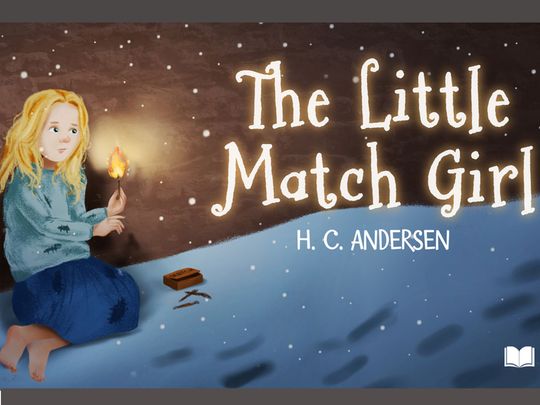
In Hans Christian Andersen’s timeless and heart-wrenching tale, “The Little Match Girl,” the reader is transported to a cold and unforgiving New Year’s Eve, where the plight of a destitute child unfolds with both beauty and tragedy.
Published in 1845, this poignant narrative delves into the harsh realities of the 19th century, where the freezing streets become the stage for a desperate little girl attempting to sell matches to support her impoverished family.
Through Andersen’s masterful storytelling, the reader is immersed in the girl’s world, where the biting cold and the looming threat of her father’s wrath drive her to seek refuge in the light of her matches.
The narrative takes a haunting turn as the girl, seated in a dark nook, uses her matches not just for warmth but to conjure vivid visions of comfort and joy. In these fleeting moments, the reader witnesses a Christmas feast and a towering tree, all seen through the lens of the girl’s desperate imagination.
The narrative skilfully weaves between the harsh reality of her surroundings and the bittersweet beauty of her dreams.
A haunting epiphany
As the girl gazes at a shooting star, the story takes an ethereal turn, drawing on the belief that such celestial events signal a soul ascending to heaven.
Andersen deftly intertwines the girl’s yearning for warmth with her longing for the love and kindness she found in her deceased grandmother. In a poignant climax, the little match girl, choosing to embrace the warmth of her visions, lights all her matches at once.
As dawn breaks, revealing the lifeless form of the little match girl, frozen in a serene smile, Andersen leaves us with a haunting epiphany. The passersby, ignorant of the transcendental beauty that unfolded in the girl’s final moments, can only pity her posthumously.
Themes of hardship and hope
Andersen’s prose, unadorned and evocative, paints a vivid picture of a world where innocence collides with the harshness of life. The narrative doesn’t shy away from the stark realities of the time, where children faced the peril of freezing or starving to death.
The simplicity of the storytelling serves to underscore the commonplace tragedy of the era, allowing readers to connect with the universal themes of hardship and hope.
“The Little Match Girl” is a story that transcends time, resonating with readers young and old. Andersen, a master of storytelling, crafts a narrative that goes beyond the traditional Christmas tale. Instead of a fairy-tale ending, the story imparts a powerful message about the importance of kindness in the midst of a harsh and unforgiving world.
This beautiful and poignant tale, with its melancholic charm, reminds us of the true spirit of Christmas and prompts reflection on the values that truly matter.
In revisiting this classic work, Hans Christian Andersen ignites our imaginations and stirs our hearts, leaving an indelible mark on the literary landscape.
Ahmad Nazir is a UAE based freelance writer







_resources1_16a45059ca3_small.jpg)

